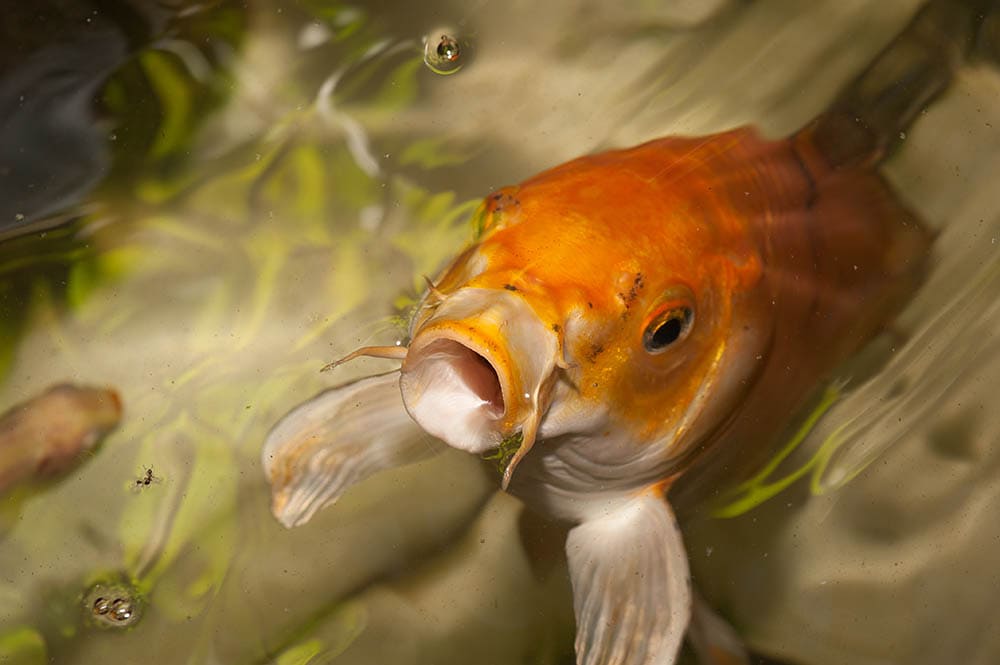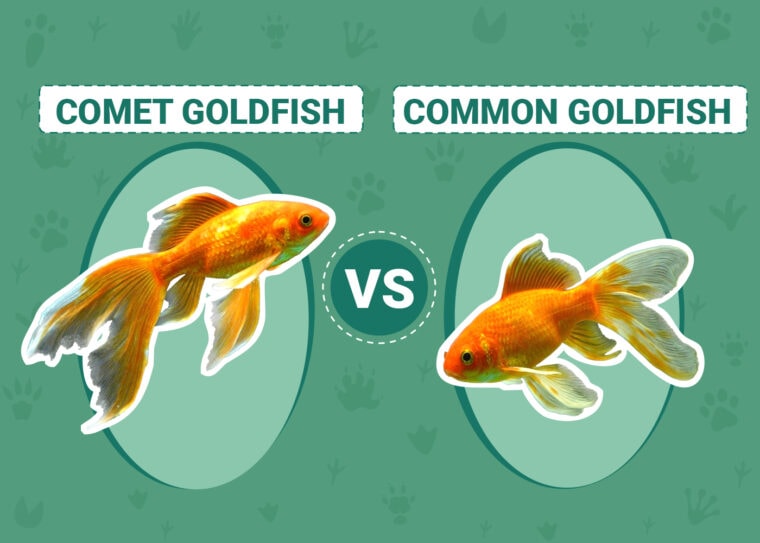
Click to Skip Ahead
Goldfish are descendants of the crucian carp, and there are over 200 varieties of the colorful fish. Beginner aquarists often overlook the fish because they’re not as elegant or exciting as other species. They’re given away as prizes at carnivals, contained in large stock tanks at pet stores, and resigned to live their lives in cramped fish bowls. Regardless of their unrefined reputation, goldfish are fascinating creatures that deserve the same treatment as other “fancy” fish.
The Common goldfish and Comet goldfish are two species you’ve probably seen most often in pet stores. They’re similar in appearance, but the Comet is more streamlined than the Common and has longer, flowing fins. When viewing the two species from the top of the tank, you’ll notice that the Common has a more rounded body than the Comet. We’ll discuss what makes the two species spectacular and which fish is suitable for your home.
Visual Differences

At a Glance
Comet Goldfish Overview
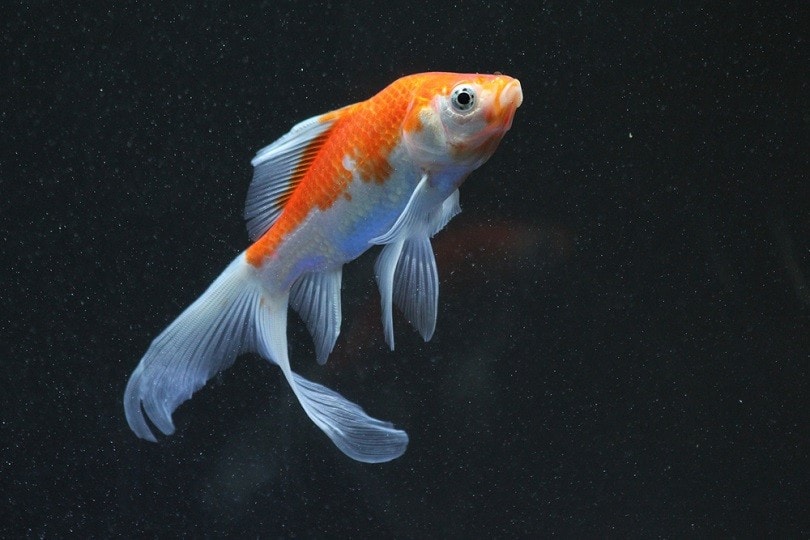
Behavior and Temperament
Comets enjoy an active lifestyle when they have plenty of space to dart around the tank or pond. They’re generally not aggressive towards other species, but smaller fish that can fit in their mouths are vulnerable to becoming their prey. Unlike other species that hide when they see humans approaching the tank, a Comet will swim near the glass and eagerly await meals. Comets are not bland fish that like to hover in the corner away from the action, but they often swim at high speeds with their V-shaped tail dangling behind like the tail of a comet.
Habitat
Like the Common goldfish, the Comet is often placed in less than adequate living conditions. Although you often see them in tiny round bowls, the fish need a large tank or pond to accommodate their energy needs. The minimum tank size for Comets is 50 gallons, but advanced aquarists recommend using tanks as large as 75 to 100 gallons. Why do you need such a large tank for a simple goldfish?
When the fish is young, you do not need a large tank, but the Comet can grow up to 12 inches. Starting with a larger tank seems inconvenient, but it’s less expensive than replacing a smaller one when the fish increases in size. Comets are inexpensive, and some people do not value them as much as pricier species. They may only survive a few years in harsh conditions but can live over 20 years with proper care.
Regular tank cleaning is essential for maintaining the health of all marine life, but it’s particularly critical with Comet goldfish. They produce a sizable amount of waste and need an aquarium with a reliable filter that cycles the water several times a day. Bacteria levels can rise, and oxygen levels can drop when the aquarium is not adequately maintained.
Diet
Comets are omnivorous fish that can be fed flakes, pellets, gel food, and frozen or fresh vegetables. Vegetables must be thawed out and diced up into tiny pieces to be easier to consume and digest. If you use zucchini or another vegetable with thick skin and starchy flesh, remove the skin and steam the meat until it’s tender. They will eat flakes from the top of the water, but air bubbles can disrupt their digestion. Before using flakes, you can soak them in water, so they’ll sink to the bottom of the tank.
Leafy greens and aquatic plants can serve as healthy snacks for the Comet, and they can even munch on brine shrimp as an occasional treat. Like most fish, Comets should not be fed bread or crackers that can expand in their stomach.
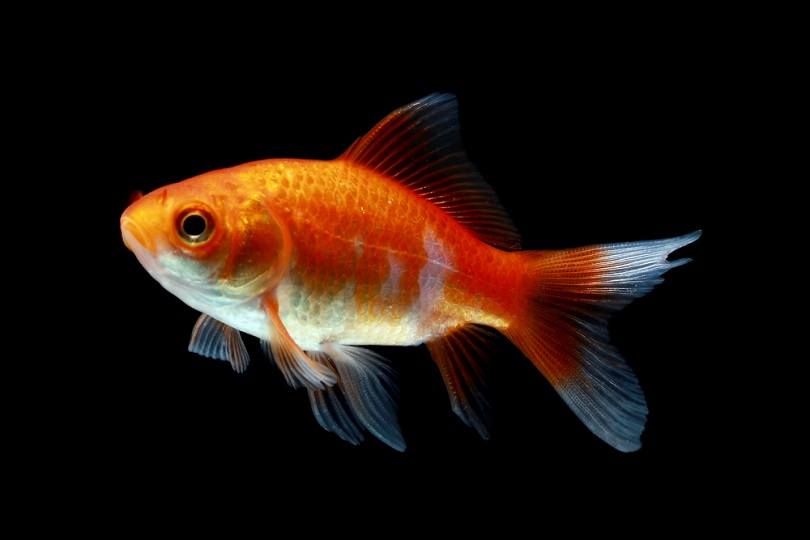
Temperature Tolerance
Compared to other goldfish varieties, the Comet thrives in colder water. The ideal temperature setting is 68° F, and the maximum temperature should not rise above 72°F. Since tropical fish require higher temperatures, they are not suitable companions for Comets. Although goldfish species are famous for living in deplorable conditions and surviving hot or frigid water, Comets and other goldfish will live much longer when not stressed by poor living conditions. Abrupt temperature changes can harm the fish but keeping them in a large aquarium will make it easier to maintain a constant temperature.
Suitable for:
Comets are excellent pets for beginners, children, and advanced aquarists. Parents should teach their children how to maintain the aquarium but caring for the goldfish is easier than keeping exotic species. They’re tough creatures that can tolerate dirty water and uncomfortable temperatures, but they’ll enjoy longer lives and happiness when cared for properly.
Common Goldfish Overview
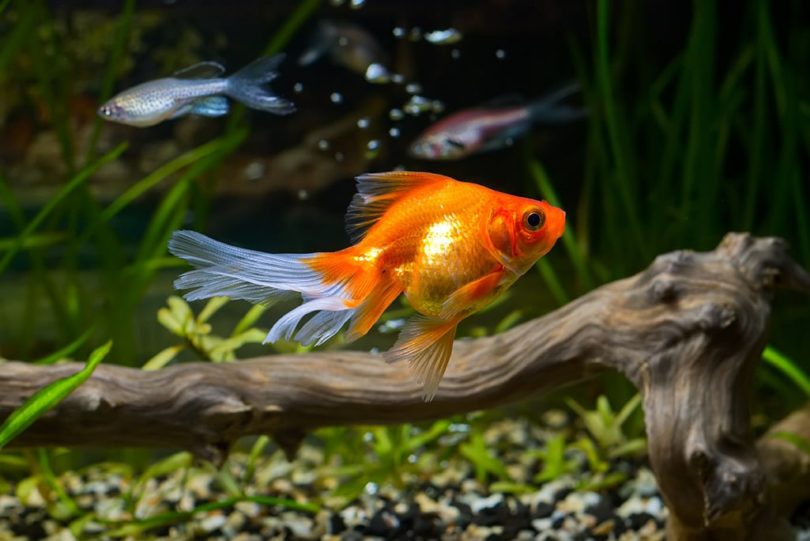
Behavior and Temperament
Common goldfish are not as athletic as Comets, but they share the same temperament. They’re calm, peaceful fish that do not pick fights with other species. However, they can eat smaller fish if they fit in their mouths. Like Comets, Commons seem to interact well with humans.
They eagerly await mealtime and may swim near the top of the tank and stare at their owners to encourage them to drop food. During the breeding season, the males can get aggressive with females. Females can become worn out and even injured from frantically swimming away from their pursuers. Adding aquatic plants for hiding spots and keeping the marine population lower can prevent injuries.
Habitat
Common goldfish can survive in freezing temperatures if they can get oxygen from a hole in the ice, and they can tolerate water temperatures of up to 90° in backyard ponds. However, the ideal temperature range is 65°–75°F, and the most suitable aquarium pH is 7.0–8.4. Like the Comet, the Common goldfish should be kept in a large tank between 75 and 100 gallons. Although it does not sprint around the tank as much as the Comet, the Common can grow up to 18 inches long, and it’s more practical to start with a large aquarium, even when the fish is still young and tiny.
Aquarists like to add decorations to enhance the appearance of their aquariums, but Common goldfish need to swim in a tank without too many obstacles. Gravel, aquatic plants, and a few decorations are okay, but try not to overcrowd the tank.
Diet
Overfeeding a Common goldfish is a common problem that often leads to its demise. Commons will eat anything that you toss into the tank, and it’s vital to avoid bread products and insects that have come from the backyard. Bread will expand in the fish’s stomach, and non-commercial insects can have pesticides, fertilizer, and other contaminants on their bodies that will disrupt the water chemistry. Commons can eat pellets, flakes, gel food, and some human cuisine. Soaking the flakes before serving them will prevent digestive problems from air bubbles, and you can chop up leafy greens and berries as an afternoon treat. Some of the foods you can serve the Common include:
Temperature Tolerance
Common goldfish can share an aquarium with species that prefer slightly warmer temperatures, but it’s best not to exceed 75°F. If you have an outdoor pond, the Common can survive temperatures under 50°F. It will go into a brief hibernation called torpor when the water gets frigid to tolerate the change. During torpor, the fish will move around less to conserve energy and not eat as frequently. Removing debris from the pond will maintain oxygen levels and keep the fish healthy if it enters torpor.
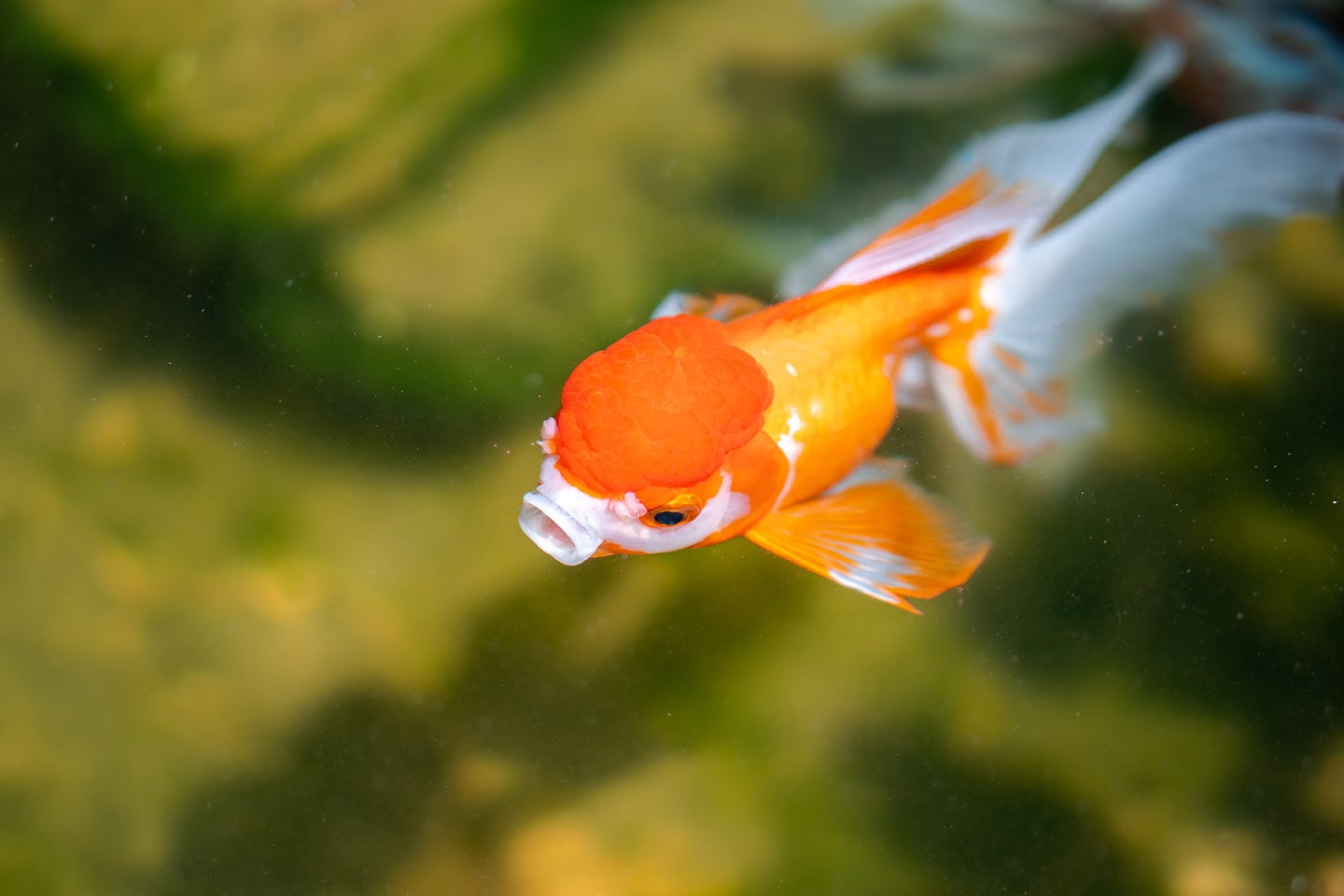
Suitable for:
Common goldfish are perfect pets for amateur aquarists, children, and advanced fish keepers. Although parents must show their children how to maintain and clean the tank, kids will not need to learn advanced care tips associated with caring for exotic species. Commons are not challenging to keep, but they require a dedicated owner to keep the tank water clear and avoid overfeeding.
Which Breed Is Right for You?
It’s difficult to recommend one species because both the Common and Comet will make exciting pets. However, the Common tolerates warmer water and can live with other warm-water fish. It can grow up to 6 inches longer than the Comet, but both species can live happily in large tanks with plenty of open space.
If you prefer a pet that’s always on the move, the Comet may be the best goldfish for your home. While Commons are not lazy or inactive, they do not enjoy swimming at full speed like Comets. Whether you choose a Common or Comet, you’re unlikely to find a friendlier or hardier species of fish.
Featured Image Credit: Top – Agus_Gatam, Shutterstock | Bottom – uanCarlosPalauDiaz, Shutterstock





